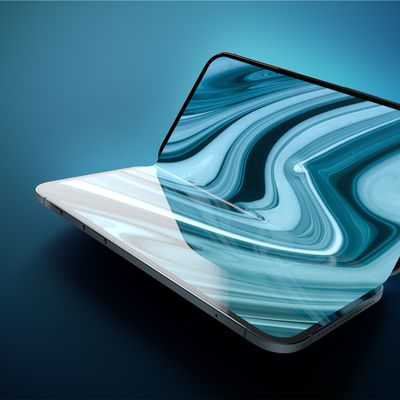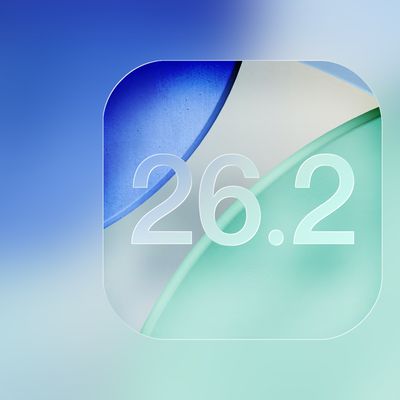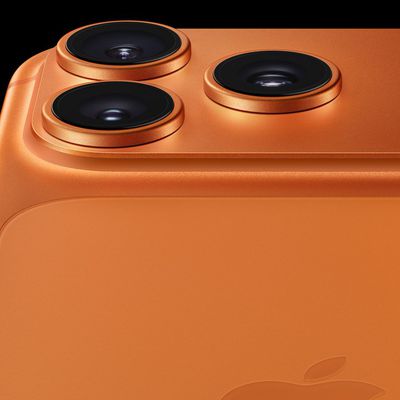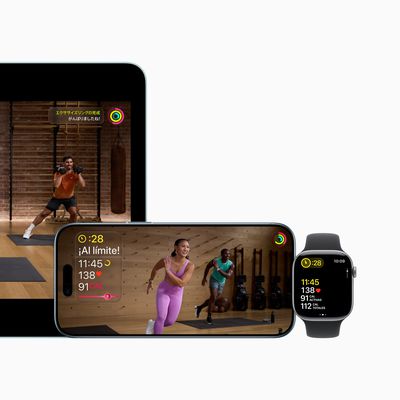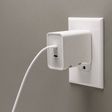Samsung Begins Mass Production of 14-Inch and 16-Inch OLED Displays That Apple Might Use for 2022 MacBook Pro
Samsung Display today announced that it has started mass production of 14-inch and 16-inch OLED displays for laptops, and a key feature of the panels is support for up to a 90Hz refresh rate for smoother appearing content.
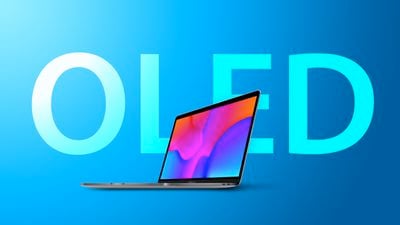
Samsung Display said it has been supplying the OLED panels to global manufacturers, including ASUS, Lenovo, Dell, HP, and Samsung Electronics, for use in laptops, including ASUS's recently announced Zenbook and Vivobook Pro laptops. Apple was not mentioned as being a customer, but Korean website The Elec last month reported that Samsung Display was preparing its production lines for future MacBooks with OLED displays, and DigiTimes has said Apple plans to launch a 16-inch MacBook Pro with an OLED display in 2022.
MacBook Pro models currently use LCD displays with a 60Hz refresh rate, so the potential move to OLED and 90Hz would be significant. OLED benefits include higher brightness, improved contrast, deeper blacks, and more, while a 90Hz refresh rate would result in smoother appearing content while watching videos, gaming, and scrolling text.
In the meantime, rumors suggest Apple will soon release redesigned 14-inch and 16-inch MacBook Pro models with LCD displays, but with mini-LED backlighting, which offers many of the same advantages as OLED. Given that large OLED displays are expensive to manufacture, perhaps Apple will eventually offer both mini-LED and OLED versions of the MacBook Pro, with the latter technology reserved for higher-priced configurations.
Apple already uses OLED displays for the Apple Watch and several iPhone models, including the entire iPhone 12 and iPhone 13 lineups. Samsung is reportedly the exclusive supplier of OLED displays for the iPhone 13 Pro and iPhone 13 Pro Max.
Popular Stories
Apple is about to release iOS 26.2, the second major point update for iPhones since iOS 26 was rolled out in September, and there are at least 15 notable changes and improvements worth checking out. We've rounded them up below.
Apple is expected to roll out iOS 26.2 to compatible devices sometime between December 8 and December 16. When the update drops, you can check Apple's servers for the ...
Apple has ordered 22 million OLED panels from Samsung Display for the first foldable iPhone, signaling a significantly larger production target than the display industry had previously anticipated, ET News reports.
In the now-seemingly deleted report, ET News claimed that Samsung plans to mass-produce 11 million inward-folding OLED displays for Apple next year, as well as 11 million...
Apple is actively testing under-screen Face ID for next year's iPhone 18 Pro models using a special "spliced micro-transparent glass" window built into the display, claims a Chinese leaker.
According to "Smart Pikachu," a Weibo account that has previously shared accurate supply-chain details on Chinese Android hardware, Apple is testing the special glass as a way to let the TrueDepth...
Apple today seeded the second release candidate version of iOS 26.2 to developers and public beta testers, with the software coming one week after Apple seeded the first RC. The release candidate represents the final version iOS 26.2 that will be provided to the public if no further bugs are found.
Registered developers and public beta testers can download the betas from the Settings app on...
Google Maps on iOS quietly gained a new feature recently that automatically recognizes where you've parked your vehicle and saves the location for you.
Announced on LinkedIn by Rio Akasaka, Google Maps' senior product manager, the new feature auto-detects your parked location even if you don't use the parking pin function, saves it for up to 48 hours, and then automatically removes it once...
Apple's chipmaking chief Johny Srouji has reportedly indicated that he plans to continue working for the company for the foreseeable future.
"I love my team, and I love my job at Apple, and I don't plan on leaving anytime soon," said Srouji, in a memo obtained by Bloomberg's Mark Gurman.
Here is Srouji's full memo, as shared by Bloomberg:I know you've been reading all kind of rumors and...
Apple's iPhone development roadmap runs several years into the future and the company is continually working with suppliers on several successive iPhone models at the same time, which is why we often get rumored features months ahead of launch. The iPhone 18 series is no different, and we already have a good idea of what to expect for the iPhone 18 Pro and iPhone 18 Pro Max.
One thing worth...
Apple and Google are teaming up to make it easier for users to switch between iPhone and Android smartphones, according to 9to5Google. There is a new Android Canary build available today that simplifies data transfer between two smartphones, and Apple is going to implement the functionality in an upcoming iOS 26 beta.
Apple already has a Move to iOS app for transferring data from an Android...
Apple today announced that Fitness+ is expanding to 28 new markets on December 15 in the service's largest international rollout since launch, accompanied by new language dubbing and a K-Pop music genre.
Apple Fitness+ will become available in Chile, Hong Kong, India, the Netherlands, Singapore, Taiwan, and additional regions on December 15, with Japan scheduled to follow early next year....
Apple's senior vice president of hardware technologies Johny Srouji could be the next leading executive to leave the company amid an alarming exodus of leading employees, Bloomberg's Mark Gurman reports.
Srouji apparently recently told CEO Tim Cook that he is "seriously considering leaving" in the near future. He intends to join another company if he departs. Srouji leads Apple's chip design ...




